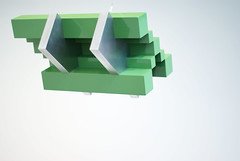
Having written that, the experience which Rezac offers is wholly, and unapologetically, visual. The rhythm of shapes repeated--the cascade--within any given piece is the result of the artist's own resolution of formal concerns. External references, which might be drawn in by an observer after the fact, seem to count for little when compared to Rezac's own control of his work's execution. He's possessed of a peculiar teleology of which his painted sculptures are evidence: they're his products in the sense that an oak produces acorns.
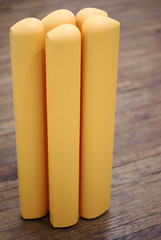
Historically, it's possible to locate Rezac after Minimalism and to describe him, partly, as a corrective to it. Minimalist sculptor Richard Serra, for example, might be most (in)famous for the physical encounters which he has forced through the public placement of heavy steel plates. Such massive objects, industrially fabricated and superficially neglected, seem as antithetical to Rezac's vision as the notion that art has a right to demand interaction through the exercise of its own brute strength. May 19, 1995, Chicago Tribune critic Alan Artner quoted Rezac as having said: "I am interested in making sculpture that you would approach and understand as you would the things that wash up on shore..."
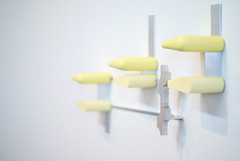
Beyond his consideration of the spectator's choice to become involved, Rezac seems to have remembered the choice of direct involvement--in process--made by the AbEx predecessors to Minimalism, such as David Smith. Given Smith's current status within certain critical circles the comparison might initially seem odd, as it's very hard to apply the oft used (pejorative sense regarding Smith) term "macho" to the man (Rezac) or his art. But not all studio-based practices lead inevitably towards the same end; nor do all studio-based practices proceed towards their different ends in a like manner. His (Rezac's) oeuvre is, as written above (and remembering too the reference to teleology) virtuous in an Aristotelian sense: being a mean between one thing and another. And that state of being characteristic of the work seems not unrelated to the man himself. Social change, here, isn't proposed through literal activism and engagement, but rather by means of the (manifold sense) modeling--careful, patient, creative--resulting in the art.
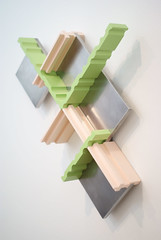
Recalling Alan Artner again: On May 23, 2003, he (Artner) named Rezac, "one of the most [...] brilliant sculptors ever to have worked in Chicago." Currently on display at Devening Projects is a selection of Rezac's work which spans the decade just past. It might be a chance to meet Rezac for the first time and evaluate Artner's claim; or it might be a chance to remake his acquaintance in the company of painter Gary Stephan. The exhibition of Richard Rezac and Gary Stephan, which opened on August 29, 2010, is the first in a year-long series devoted to the bringing together of partners in visual dialogue.
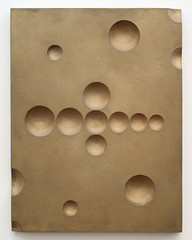
On September 25, 2010, a second installation, featuring new work by the same two artists--including a gallery talk which is free, and open to the public--will begin.
Richard Rezac & Gary Stephan
August 29 – October 16, 2010
Saturdays 12pm – 6pm
(and by appointment)
Devening Projects and Editions
3039 W. Carroll
Chicago, IL 60612
http://deveningprojects.com
Richard Rezac,
http://richardrezac.com
Gary Stephan,
http://garystephanstudio.com
- Paul Germanos
No comments:
Post a Comment